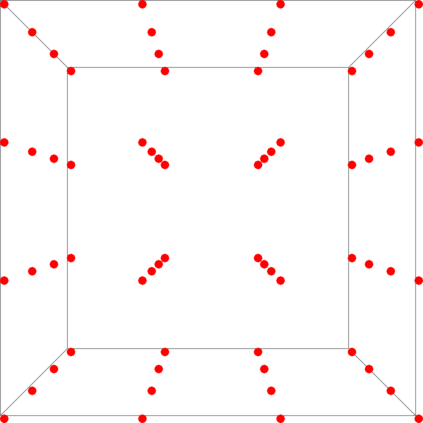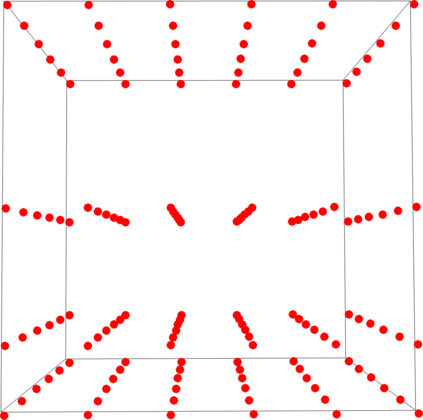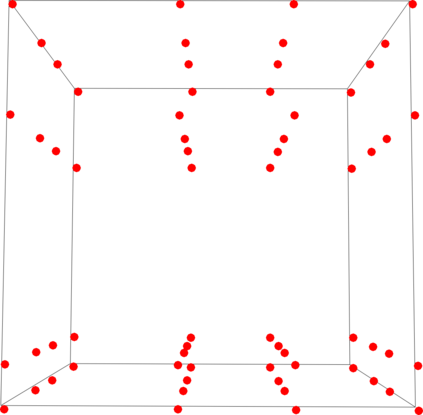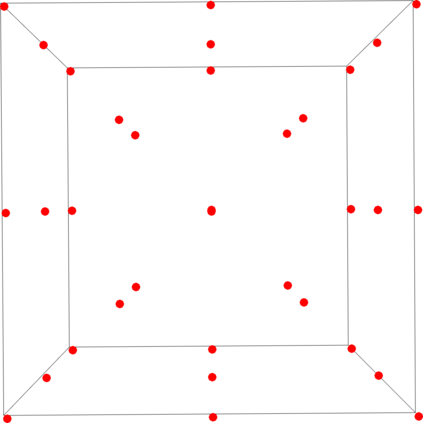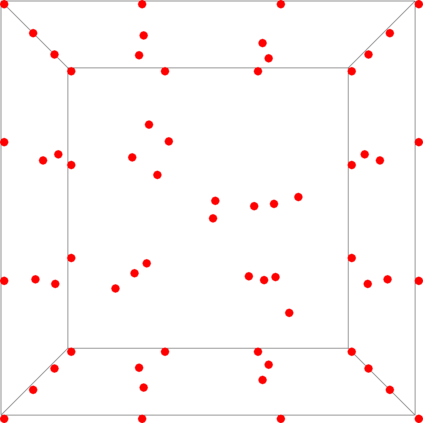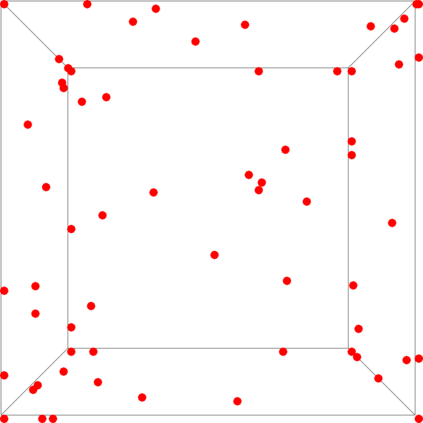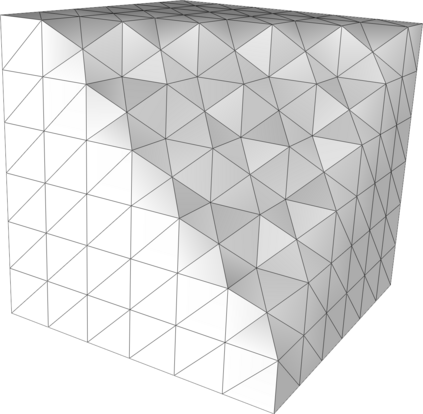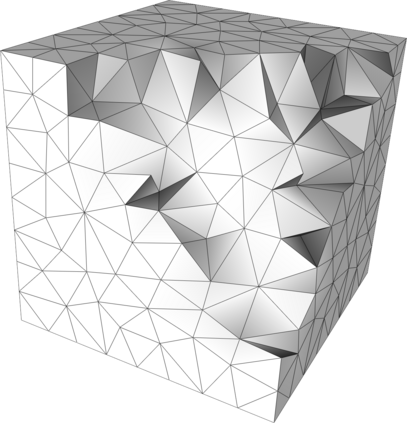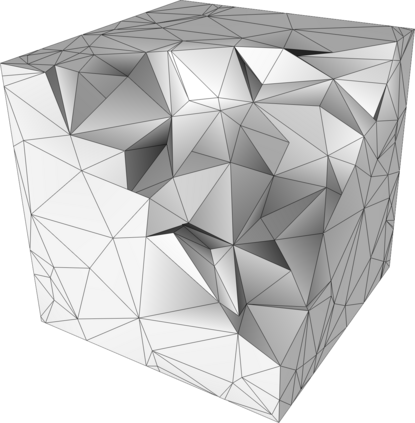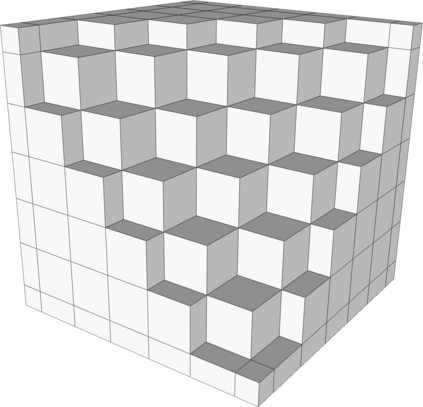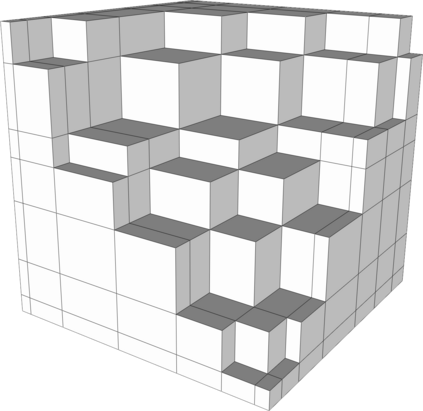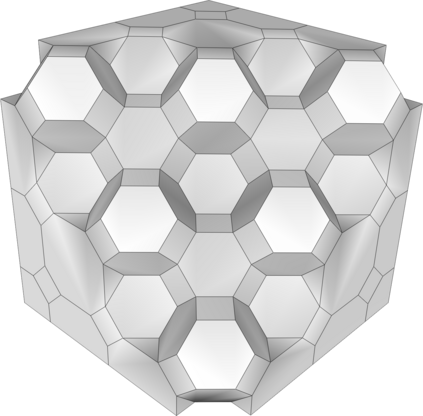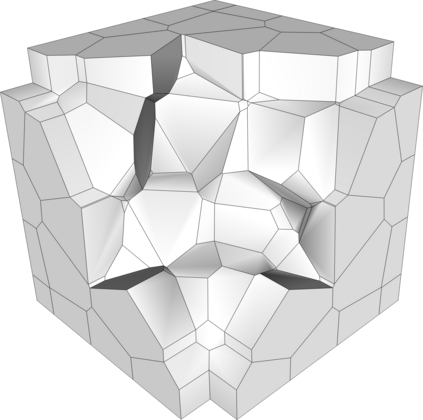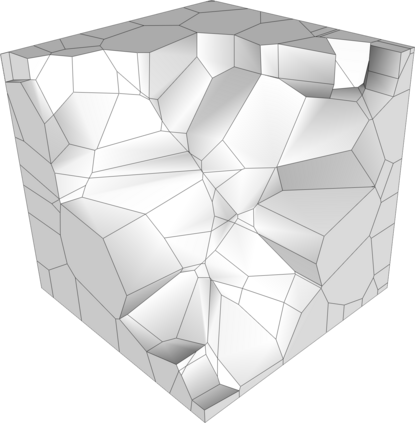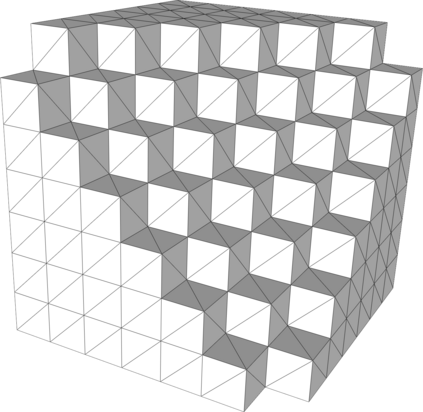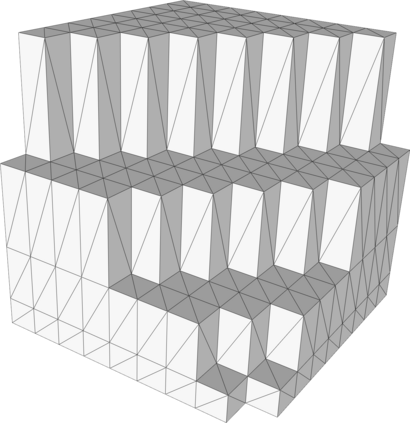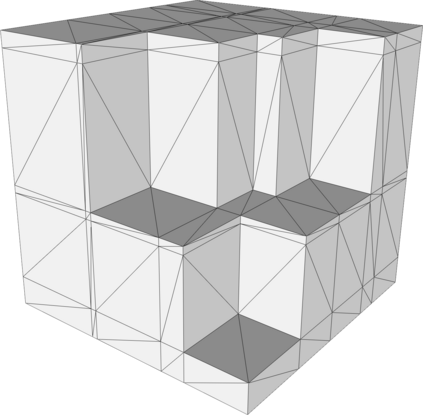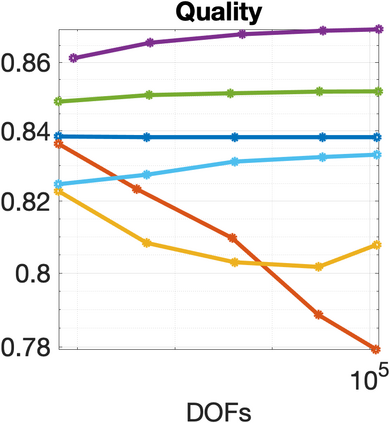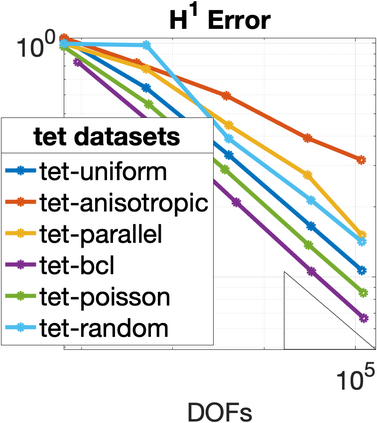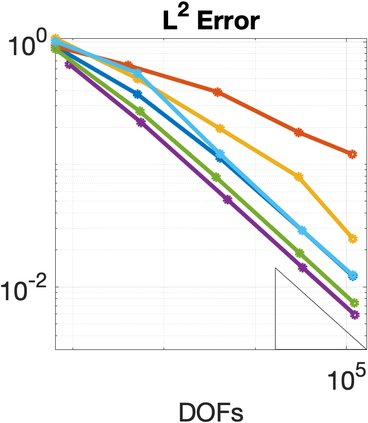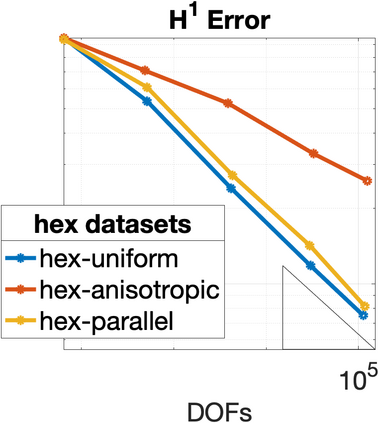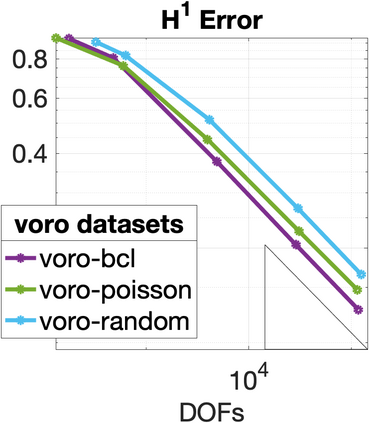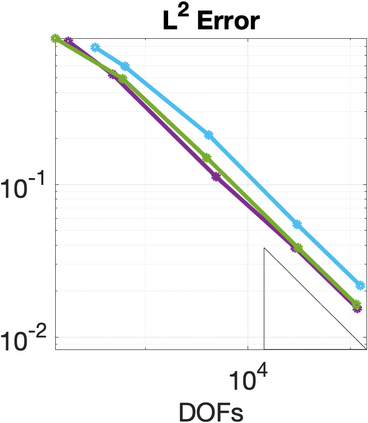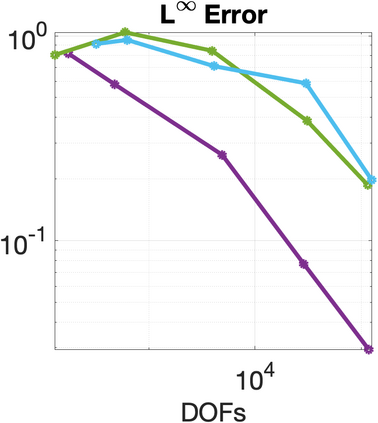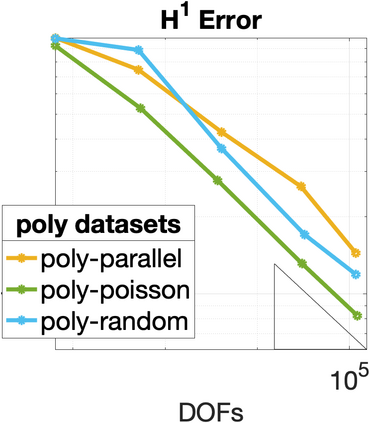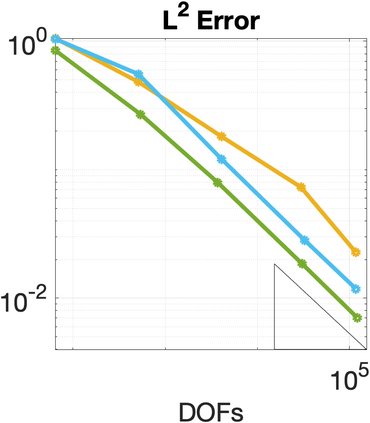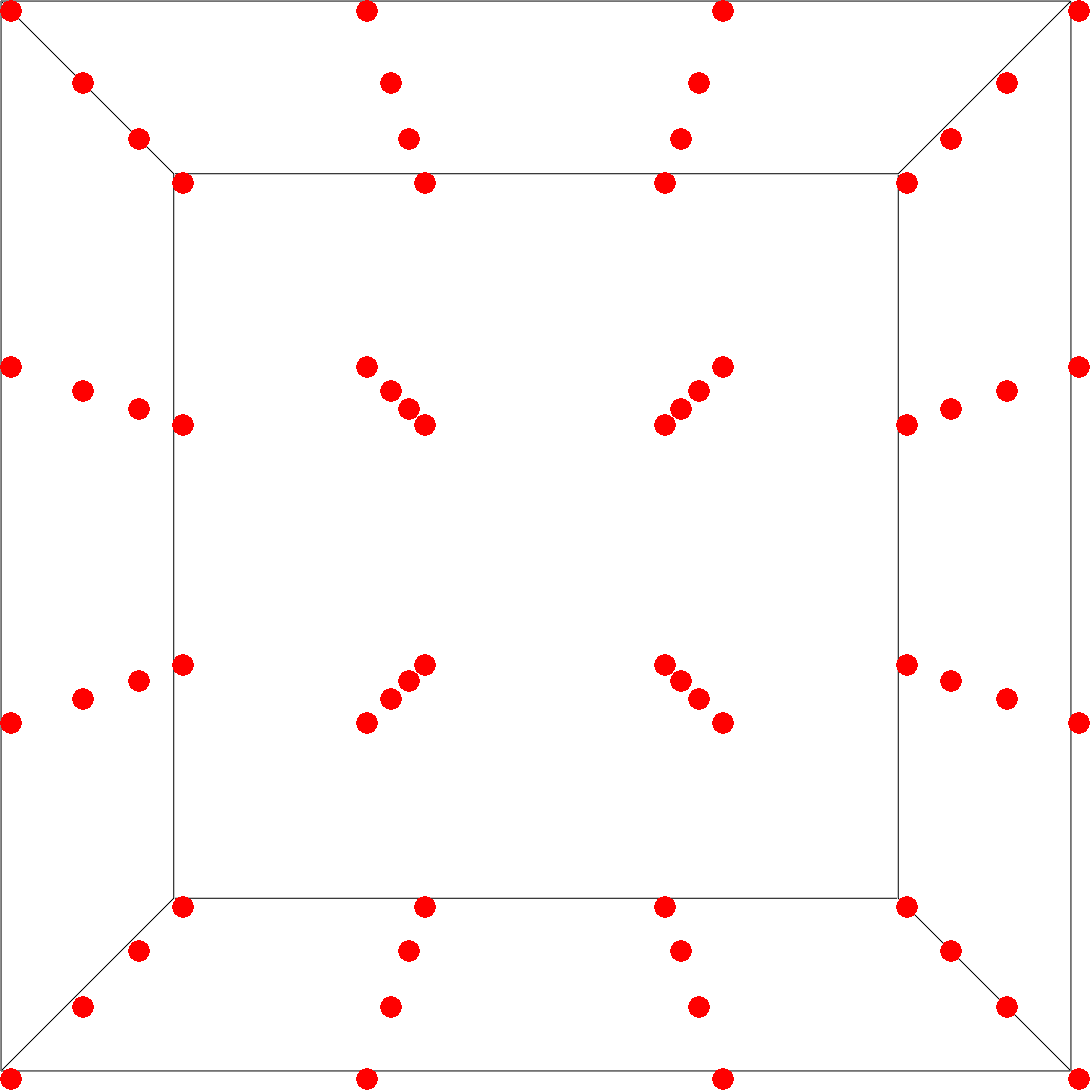We present the design of a mesh quality indicator that can predict the behavior of the Virtual Element Method (VEM) on a given mesh family or finite sequence of polyhedral meshes (dataset). The mesh quality indicator is designed to measure the violation of the mesh regularity assumptions that are normally considered in the convergence analysis. We investigate the behavior of this new mathematical tool on the lowest-order conforming approximation of the three-dimensional Poisson equation. This work also assesses the convergence rate of the VEM when applied to very general polyhedral meshes, including non-convex and skewed three-dimensional elements. Such meshes are created within an original mesh generation framework, which is designed to allow the generation of meshes with very different sizes, connectivity and geometrical properties. The obtained results show a significant correlation between the quality measured a priori by the indicator and the effective performance of the VEM.
翻译:我们提出一个网格质量指标的设计,可以预测虚拟元素法(VEM)在某一网格系或多面间隔的有限序列(数据集)上的行为。网格质量指标的设计是为了衡量在趋同分析中通常考虑的网格常规假设的违反情况。我们调查了这个新的数学工具在符合三维 Poisson方程式近似的最底层的数学工具上的行为。这项工作还评估了在应用到非常普通的多面间板时的VEM的趋同率,包括非凝固和倾斜的三维元素。这些网格是在原始网格一代框架内创建的,其设计是为了允许生成尺寸、连接性和几何特性都非常不同的网格。获得的结果显示,该指标先天测量的质量与VEM的有效性之间有很大的关联。

